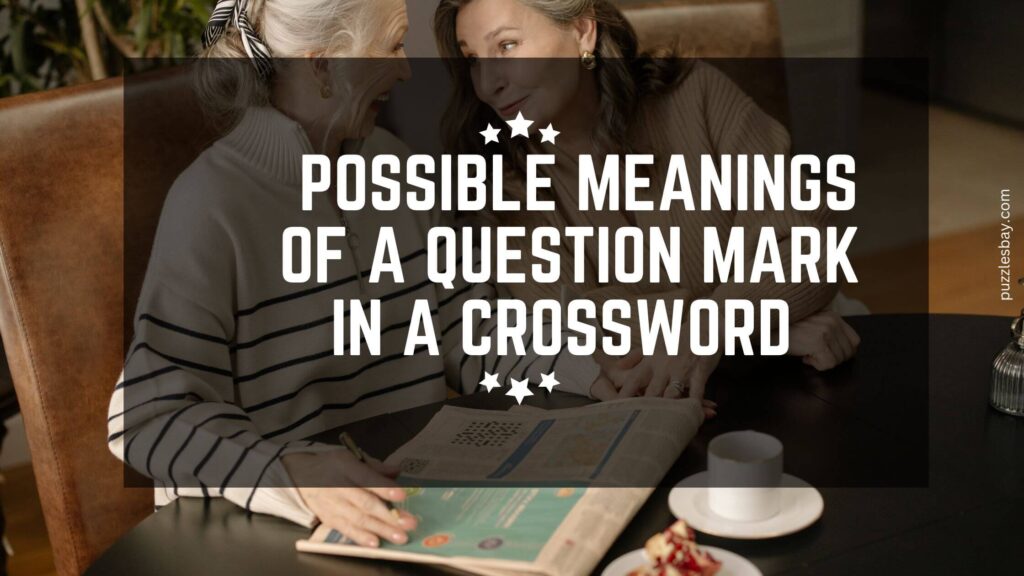
Crossword puzzles have always fascinated me with their blend of language, logic, and creativity. They are a great way to challenge one’s vocabulary and sharpen problem-solving skills.
For those new to crosswords, understanding the clues is key to solving the puzzle.
One common area beginners find tricky is the use of a question mark in clues. What does a question mark mean in a crossword?
Well, this seemingly simple symbol can unlock a wealth of meanings and insights. Here are 6 important meanings of a question mark in crossword clues.
1. Wordplay Indicator
A question mark may signify that the clue involves a pun or a clever twist on language.
For example, a clue like “Focuses on the road?” could refer to the Ford Focus car model rather than the act of concentrating while driving.
This indicates that the solver should think outside the box and consider alternative meanings or associations.
2. Double Meanings
A question mark may also suggest that the answer has a double meaning or is a riddle.
This encourages solvers to explore various interpretations of the words in the clue, as the answer might not be straightforward.
For instance, “What a dog does to a bone?” might lead to “chews,” but the clue could also play on the idea of “chews” as a form of enjoyment.
3. Non-Literal Interpretation
The question mark can also indicate that the clue should not be taken literally.
This means that the words used may have a figurative or unexpected significance.
For example, a clue like “It’s a wrap?” might refer to a type of food wrap rather than the act of wrapping something up.
This invites solvers to think creatively about the language used in the clue.
4. Setter’s Playfulness
In some cases, a question mark may denote that the crossword setter is intentionally bending the rules or playing with expectations.
This could mean that the clue is designed to mislead or challenge the solver, requiring them to think critically about the clue’s structure and wording.
5. Cryptic Clue Structure
In cryptic crosswords, a question mark can signal that the clue is structured in a way that deviates from conventional definitions.
It may indicate that the solver needs to consider both the literal and the cryptic meanings of the words to arrive at the correct answer.
For example, in the clue “Dope that is a fiend? ,” the answer is “GENIE.” Here, the question mark suggests that “fiend” is not being used as a direct synonym but rather as an example or illustration of the answer.
Solvers must recognize that “GENIE” is a specific type of spirit, and the clue is asking for an example of a fiend, rather than a synonym.
This unconventional structure requires solvers to dig deeper into the meaning and structure of the clue to uncover the correct answer.
6. Humor and Whimsy
Finally, a question mark can introduce a humorous or whimsical element to the clue.
This might be seen in clues that playfully reference cultural phenomena or use light-hearted language, making the solving experience more enjoyable.
For example, “Why did the chicken cross the road?” could lead to a pun-based answer that reflects the joke’s punchline.
